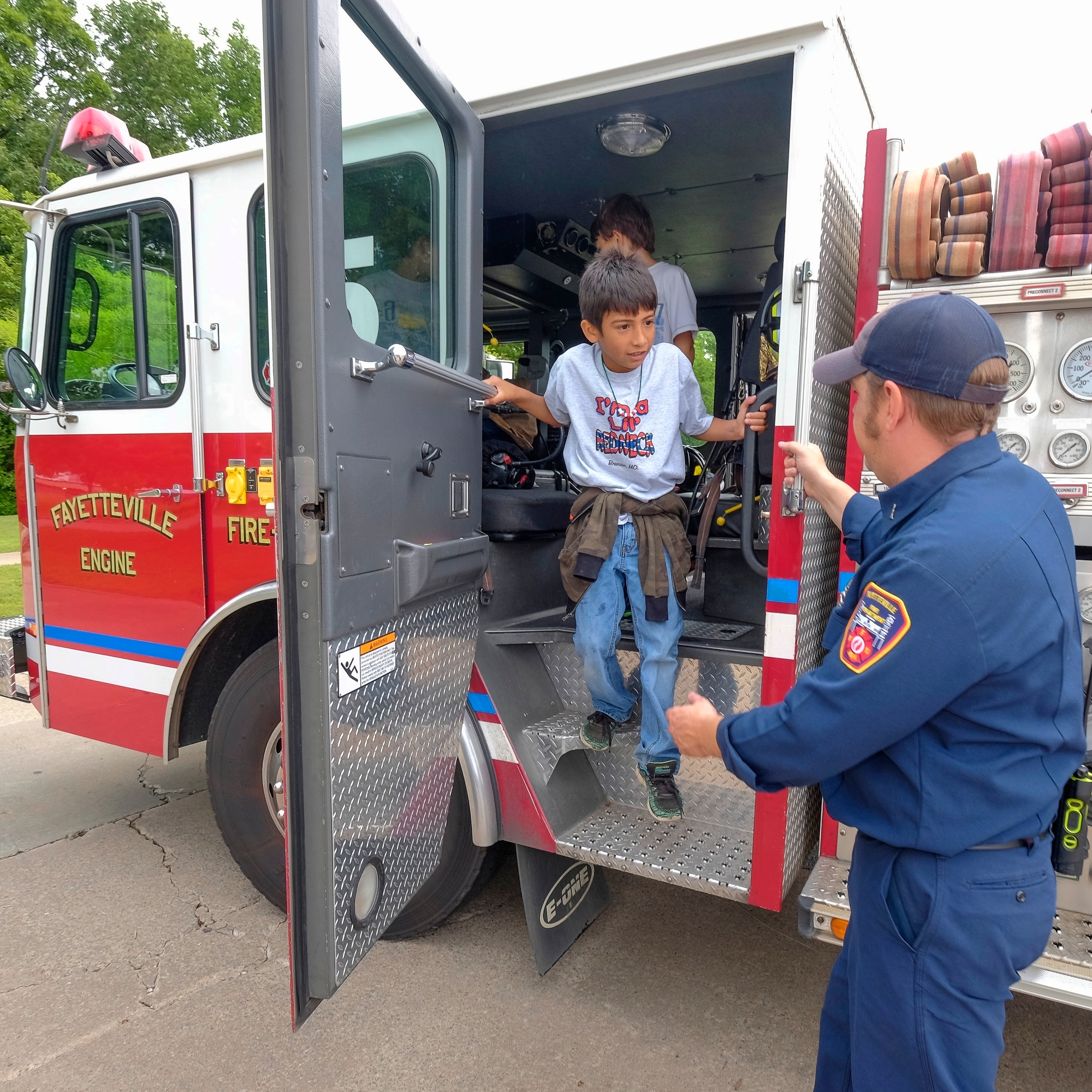
Children attend a special Prep Rally at Butterfield Trail Elementary School organized by the Washington County Community Resilience Coalition.
10 Tips for Keeping Children Safe in a Home Fire
Fires and burns are one of the leading causes of death for children under the age of 15. Preventing house fires is the key to keeping children safe. Here are some tips from Save the Children’s safety experts on how to keep children safe in a fire.
- Teach children fire safety.
Teach children how to prevent and survive a fire. Explain why fire safety is important and demonstrate safe behaviors when using fire, fire tools, and other heat sources. Explain that fire is a tool, not a toy. - Install smoke alarms.
Install a smoke alarm near your kitchen, on each home level, near sleeping areas, and in each bedroom. Use the test button to check the smoke alarms every month and replace all the batteries at least once a year. Teach children what smoke alarms sound like and what to do if they hear them. - Teach children about firefighters.
The sight of a firefighter wearing a fire suit and mask can be scary to children. Teach children what firefighters look like and sound like with their oxygen masks on. Take them to your local fire department to meet firefighters and learn about fire safety. - Keep matches and lighters out of reach.
Store matches and lighters out of children’s reach and sight, preferably in a locked cabinet. If a child finds matches or lighters, instruct them not to handle them and to tell an adult. Use lighters with child-lock features. - Keep children away from flames and heat sources.
Never leave children unattended near stoves or burning candles, even for a short time. - Teach children 9-1-1 (or local emergency number).
Help children understand how and when to call 9-1-1 for help. If there is a home fire, children should evacuate before calling 9-1-1. Children only need to call 9-1-1 if an adult is not able to do so. - Practice fire drills.
Include children in planning and practicing home fire drills. Have fire drills at least twice a year so children can practice their primary and secondary escape routes. Plan a fire drill at night when the children are sleeping, but warn them ahead of time so they don’t panic. - Demonstrate how to escape.
Show children how they would evacuate from a room filled with smoke by crawling along the floor to the nearest exit. - Get out and stay out.
If there’s a fire, get everybody out of the building, stay out, and call for help. Don’t go back into the home to get belongings. - Teach children to STOP-DROP-and-ROLL if their clothes catch on fire. Stop (don’t run), drop to the ground and cover your face with your hands. Then roll over and over or back and forth until the fire is out.
Ìý
Additional Resources
American Red Cross:
National Fire Protection Association (NFPA):
Resources for Children
National Fire Protection Association:Ìý
